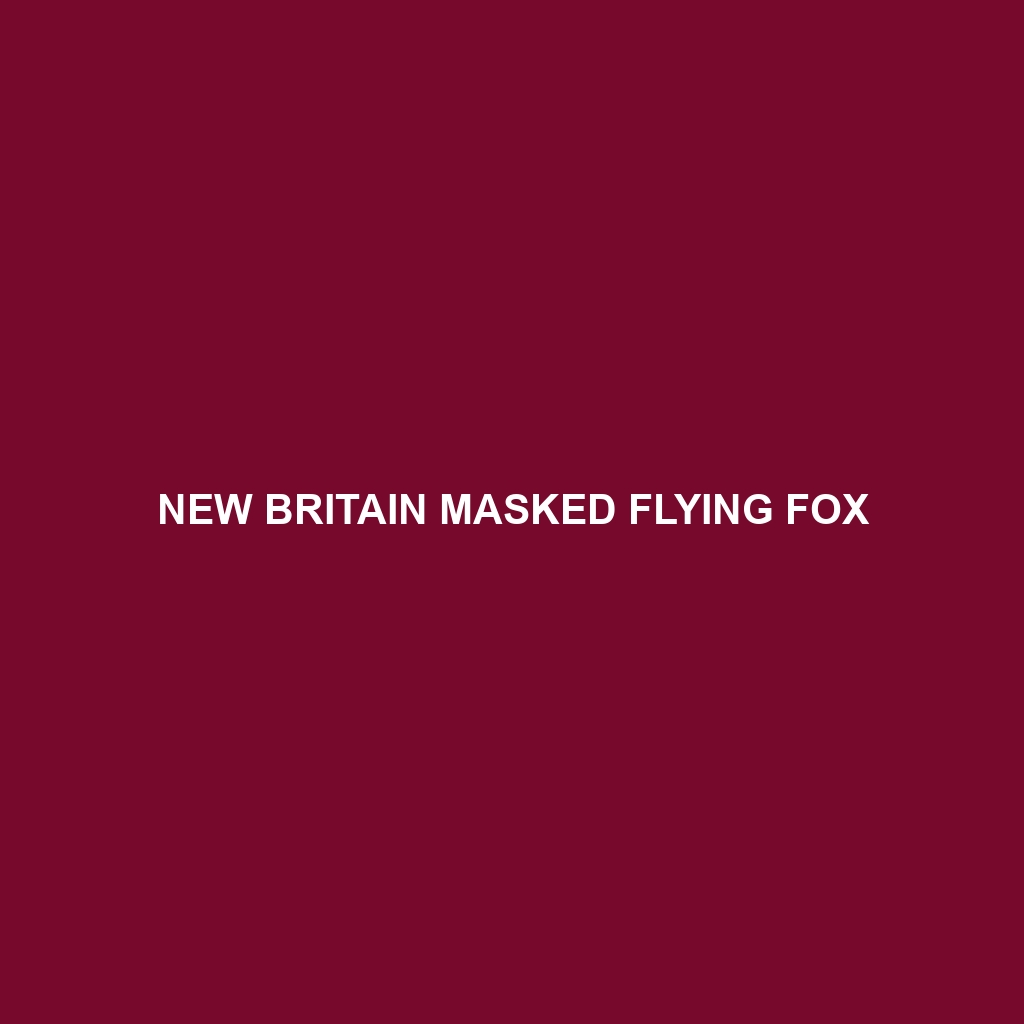Common Name: New Britain Masked Flying Fox
Scientific Name: Pteropus niger
Habitat:
The New Britain Masked Flying Fox primarily inhabits the tropical rainforests of New Britain Island, located in Papua New Guinea. These bats are often found in areas rich in fruiting trees, which are essential for their feeding habits. They are usually seen roosting in tall trees and can also inhabit nearby agricultural landscapes where fruit is abundant.
Physical Characteristics:
The New Britain Masked Flying Fox has a wingspan that can reach up to 1 meter (3.3 feet). Their fur is generally dark brown with distinctive light-colored fur around their face, giving them a masked appearance. They have a large body, broad wings, and a relatively pointed snout, which helps them in foraging for food. This species can be easily identified by its size and unique facial coloration.
Behavior:
This species is mainly nocturnal, emerging primarily at dusk to feed on fruits. They are social animals and prefer to roost in large groups, often seen hanging upside down in trees. The New Britain Masked Flying Fox exhibits migratory behavior within its range in search of fruiting trees, contributing to their role in seed dispersal.
Diet:
The New Britain Masked Flying Fox mainly frugivorous, feeding on a variety of fruits including figs, bananas, and other tropical fruits. Their diet plays a crucial role in pollination and seed dispersal, making them vital to the health of their habitat. The bats use their excellent sense of smell to locate ripe fruits, and their feeding habits significantly impact local ecosystems.
Reproduction:
This species typically breeds once a year, with mating season occurring during the wet season. Females give birth to a single pup, which they nurture in the safety of their roost. Young bats are dependent on their mothers for several months, gradually learning to fly and forage on their own before becoming fully independent.
Conservation Status:
The New Britain Masked Flying Fox is currently listed as endangered by the IUCN Red List, primarily due to habitat loss from deforestation and hunting pressures. Conservation efforts are crucial for the survival of this species, as their numbers continue to decline.
Interesting Facts:
The New Britain Masked Flying Fox is known for its impressive flying abilities, allowing them to cover large distances in search of food. They have a life span of approximately 15 years in the wild and play a significant role in maintaining the health of their ecosystems through their feeding habits.
Role in Ecosystem:
This species is a key player in its ecosystem due to its role as a seed disperser. By consuming fruits and passing the seeds in their droppings, New Britain Masked Flying Foxes help to promote plant diversity and regeneration within their rainforest habitat. Their feeding habits support not only the growth of trees but also the overall health of the forest ecosystem.
